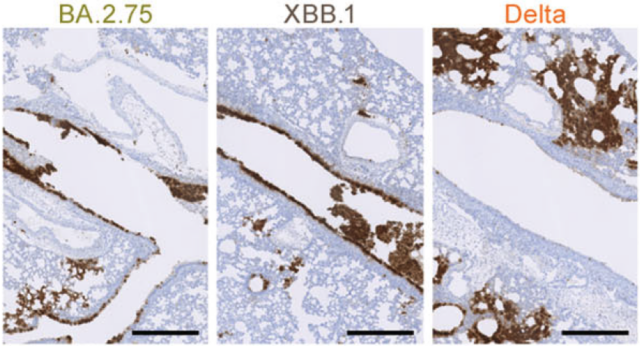A multi-institute team, including researchers from ICReDD and led by Professor Kei Sato from the Division of Systems Virology at the University of Tokyo’s Institute of Medical Science, has revealed the evolutionary trajectory and virological characteristics of the Omicron variant XBB strain, which spread primarily in India from around September 2022. This study suggests that the XBB strain is the first SARS-CoV-2 variant to increase its viral fitness (ability to reproduce and spread) through genetic recombination rather than substitutions.
Evolutionary lineage analysis showed that the Omicron XBB strain emerged through genetic recombination of the Omicron strains BJ.1 and BM.1.1.1 in the receptor-binding domain (RBD) of the spike protein. Results of virological experiments on the Omicron XBB strain revealed that it has acquired higher immune evasion compared to ancestral strain BA.2.75 and its ancestor BA.2. The XBB strain also increased its binding capacity to the ACE2 infection receptor and enhanced its infectivity through genetic recombination. On the other hand, the pathogenicity of the Omicron XBB strain in experimental animal models was found to be slightly weaker compared to the Omicron BA.2.75 strain. These research findings were published online in Nature Communications on May 16, 2023.



